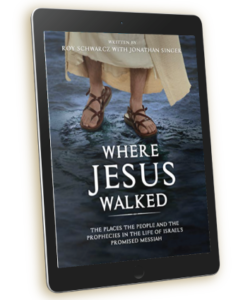Before we can go further in our studies of Revelation we need to pause and consider Daniel 2. The backbone of prophecy is the visions of Daniel. What Jesus spoke of in Matthew 24 is based on the the Book of Daniel (Matthew 24:3, 15). Babylon was the first great world empire. Nebuchadnezzar had done something that the Egyptians had not been able to do because Egypt was self-contained. The Egyptians never became a world empire, although they did influence the world as few nations have. Nebuchadnezzar began by uniting several tribes. Then he took over the Assyrian empire, then the Syrian, and then he overcame the Egyptians.
Nebuchadnezzar was plagued with a recurring dream which he believed had great significance which troubled him and caused him to be unable to sleep. The King wanted his wise men to tell him what the dream was as well as interpret it. Their response in v 10-11 is that no normal man can do such a thing, but with God all things are possible.
Daniel approaches the king and asks for time to seek the answer and then goes to his three brethren Hananiah, Mishael, and Azariah, and urges them to join him in prayer that God might give to them the answer to the dream and its interpretation. In response to their prayer God gives to Daniel the dream and its interpretation.
God is the source of all truth and has orchestrated all of this so that He might reveal His will to His children and humble the proud. With praise on his lips and in his heart Daniel goes to Arioch and tells him that he now can answer the King. He tells the king that it was the true God who has given to him both the dream and its interpretation. Daniel tells the king that his dream was prophetic, about things to come in the future. Daniel does not claim that he is wiser than any of the others but that it was God who gave to Him the answer. The king had seen in his dream an enormously large statue. The head of the image was fashioned of pure gold, the chest and arms were of silver, the belly and thighs of bronze, and the legs were of iron, with its feet partly iron and partly baked clay.
V 34-38 The statue was struck on the feet by a rock not cut by human hands which caused the statue to crumble and become reduced to chaff that was blown away by the wind. The rock that destroyed the statue grew into a huge mountain that filled the whole earth. The dream was fairly simple. It was the meaning of the dream that troubled the king.
Daniel’s interpretation makes it clear that the image revealed the course of Gentile kingdoms which iwould rule over the land and people of Israel. Nebuchadnezzar was the head of gold which represented, the Babylonian Empire. Nebuchadnezzar received his authority and power from God who sets up kings and deposes them, v. 21. His rue was viewed as a worldwide as he is described as ruling over all mankind as well as over beasts and birds. This was the authority that God originally gave to Adam.
V 39-40 The second part of the statue, the chest and arms of silver, represented the Medes and Persians (5:28, 31; 6:8). The Medo-Persians conquered the Babylonians in 539 B.C. That kingdom lasted over 200 years (539-330 B.C.), longer than the Babylonian Empire which was 87 years (626-539), but the Medo-Persian Empire was not as great as Babylon just as silver is compared with gold. The belly and thighs of bronze represented the third kingdom to arise. This was the Grecian Empire (8:20-21).
Alexander the Great conquered the Medo-Persians between 334 and 330 B.C. and assumed authority over its peoples and territory. Alexander’s conquests extended the Greek Empire as far east as the northwestern portion of India. The legs of iron represent the Roman Empire which conquered the Greek Empire in 63 B.C. More attention is directed to this fourth kingdom than to the other three kingdoms put together. Four verses are used here by Daniel to describe and interpret it. Only one verse, verse 39, is used to describe the second and third kingdoms, the Medo-Persian and the Greco-Macedonian empires.
The fourth kingdom is the kingdom that relates to the last days. Daniel had told Nebuchadnezzar that that was the reason for the image. God is speaking to Nebuchadnezzar, an idol worshiper, through this image, telling him what shall be in the latter days. Though the Roman Empire was divided into two legs in the vision made up of a mixture of iron and clay, it was one empire. This empire was characterized by its strength, just as iron is stronger than bronze, silver, and gold. The Roman Empire was stronger than any of the previous empires. It crushed all the empires that had preceded it.
V 41-43 The empire that began as iron became weaker and is pictured as clay mixed with iron. Iron and clay cannot be mixed and if they are the casting made of it will be very weak and easily broken apart. In this way the Roman Empire was characterized by division and deterioration it was partly strong and partly brittle. Rome never succeeded in forming a united empire. The empire was strong organizationally but weak morally, and unable to merge its empire with its love for democracy nor was it able to successfully merge into a untied nation its mixture of races and cultures. No great world power follows Rome.
The Roman Empire is the last, and it will be in existence in the latter days. Actually, it exists in some sense today. All of these other empires were destroyed by an enemy from the outside, but no enemy destroyed Rome. The Roman Empire fell apart from within—no enemy destroyed it. Rome is living in the great nations of Europe today: Italy, France, Great Britain, Germany, and Spain are all part of the old Roman Empire. The laws of Rome live on, as well as the language. Latin today is the base of French, Spanish, and other languages. Her warlike spirit lives on also: Europe has been at war ever since the empire broke up into these kingdoms. What is happening in Europe today? There is a diminishing of the nations and a unifying of the people with a common currency, common markets and common government. The foundation is being laid for the man who is coming someday to put the Roman Empire back together again. This is the Man of Sin, or the Antichrist.
V 44-45 The Antichrist will head this revived Roman Empire. He rule the world just as Nebuchadnezzar did at the beginning. When the Lord Jesus comes, He too will rule as an autocratic ruler, He is the stone made without hand and He is going to put down all rebellion against Him (Psalm 2:9; Matthew 21:44; 1 Corinthians 3:11). The Stone is one of many figures of speech in Scripture which speak of Jesus in His office as both Savior and Judge. He is the Rock of salvation (Deuteronomy 32:15), and He is the Rock of judgment (Deuteronomy 32:4). The reference here is to the second coming of Christ to the earth, which is depicted for us in detail in Revelation 19:11-21. All men will come to that Stone, or that Stone will come to all men and crush them.
God’s kingdom will prevail, and for one thousand years the earth will be tested under the personal reign of Christ. Daniel here speaks of the overthrow of those kingdoms. In Nebuchadnezzar’s dream the rock became a mountain that filled the whole earth (Daniel 2:35). In Scripture a mountain is often a symbol for a kingdom. So Daniel explained that the four empires which would rule over the land and the people of Israel would not be destroyed by human means, but rather by the coming of the Lord Jesus.
When He comes He will establish the messianic kingdom promised to Israel through David (2 Samuel 7:16). At His return He will subjugate all kingdoms to Himself, thus bringing them to an end (Revelation 11:15; 19:11-20). Then He will rule forever in the Millennium and in the eternal state. Daniel validated his interpretation by first recalling the dream and certified that the interpretation was trustworthy because it had come from God, who holds the destiny of nations in His power and knows what will take place in the future.
V 46-49 The king was so convicted and convinced that what God spoke was from God that he fell on his face before Daniel and honor him as though he were God. He confessed that Daniel’s God is superior to all the gods of Babylon and that He is Lord over the earth’s kings. He further accepted the fact of his own appointment to power by Daniel’s God (cf. vv. 37-38) and recognized His authority. Nebuchadnezzar appointed Daniel a satrap over the province in which the royal court was located in the city of Babylon (3:2) and rewarded him with gifts. Daniel asked that his kinsmen be promoted too.
So the king made Shadrach (Hananiah), Meshach (Mishael), and Abednego (Azariah) administrators to serve under Daniel in the same province. Sitting in the gate of the king is a practice that is mentioned elsewhere in Scripture. In Genesis, Lot sat in the gate of Sodom; that meant that he was a judge.
And in the Book of Esther, Mordecai was also given that office—he sat in the gate as a judge. Daniel was able to remain in the royal court as an adviser to Nebuchadnezzar. God elevated Daniel to a position in the royal court so that he could serve as a mediator between the king and the exiles from Judah who would shortly be brought to Babylon in 597 and 586.
The visions or dreams in Daniel that match the vision of John in revelation:
Nebuchadnezzar’s Dream of the Great Image (Daniel 2:31-33)
Daniel’s Dream of the Four Beasts
(Daniel 7:1-3)
John’s Vision of the Combined World Empire of the Antichrist (Revelation 13:1-2).
Note the four metals of the Great Image
• gold
• silver
• bronze
• iron
Note the four great beasts:
• lion
• bear
• leopard
• a beast—dreadful,terrible, and strong
Note the four great beasts:
• leopard
• bear
• lion
• the beast of the antichrist who combines all the others
The interpretation of the image and the four beasts in Daniel that match the combined world empires of the Antichrist
The Interpretation of the Image (Daniel 2:36-38).
The Interpretation of the Four Beasts (Daniel 7:4).
The Interpretation of the Combined World Empires of the Antichrist (Rev.13:1-2).
The head of gold is the first world empire: Babylon under Nebuchad-nezzar.
The lion is the first world empire: Babylon.
The Antichrist will combine the traits of the lion: Babylon.
The silver is the second world empire: Medo-Persia (Daniel 8:20; 2:38a).
The bear is the second world empire: Medo-Persia. (Daniel 7:5; 8:20).
The Antichrist will combine the traits of the bear: Medo-Persia. (Revelation 13:1-2).
The bronze is the third world empire: Greece (Daniel 8:21; 2:39b).
The leopard is the third world empire: Greece (Daniel 8:21-22; 10:20; 11:2-4; 7:6).
The Antichrist will combine the traits of the leopard: Greece (Revelation 13:1-2).
The iron is the fourth world empire: Rome (Daniel 9:26; 2:40).
The terrible and strong beast is the fourth world empire: Rome (Daniel 7:23-24; 9:26; 7:7).
The Antichrist will be as the iron and the beast with the ten horns, Rome. He combines all the traits of Rome. (Revelation 13:1).


